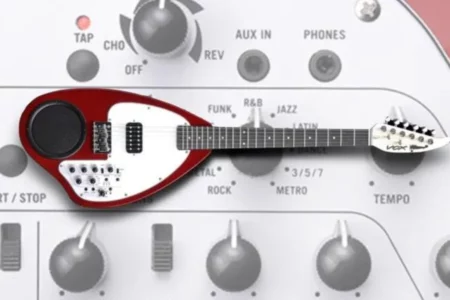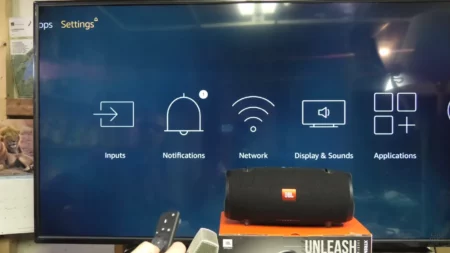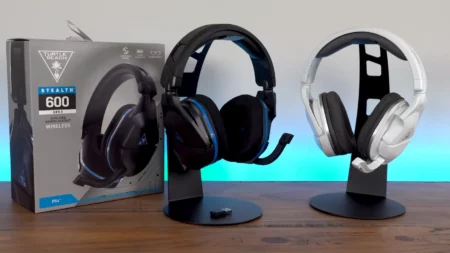Achieving optimal bass performance is every music lover’s dream, and tuning a subwoofer in the right way can help you make this dream come true within no time. Here is a complete guide on how to tune a subwoofer box to get you a cover for box size changes, subwoofer placement, port design, reducing vibration, crossover settings, equalization, and more.
Tuning a subwoofer is always a trial and error process, and one without patience should try to jump into it. It is a process of learning and yielding outcomes in the form of an ideal bass performance from your audio system. Every individual has distinctive preferences, and tuning perfectly is a way to enjoy that desired bass performance. Let’s discover the roadmap below.
Why Do You Need to Tune A Subwoofer Box?
There could be multiple reasons you need to tune your subwoofer, including bass optimization, boosting low-frequency output, reducing distortion and vibration, better placement, customized settings for personalization, and more. So, once you understand the reasons, you need to figure out your preference to get into it. The central idea of this article revolves around how to tune a subwoofer box, and that’s what we’ve explained below.
How To Find Out What A Subwoofer Box is Tuned To?
There is no hard and fast rule, but there are some hints you can apply to find out what a subwoofer box is tuned to. First, you need to check out the specifications of subwoofers from the manual. You need to check out every single detail of tuning from there. Now, get all the port size, length, and diameter measurements. You can also consult the manufacturer’s website to collect more information.
If you can install it yourself, that’s better, but if you haven’t expertise, it is better to hire an expert to install the subwoofer while tuning. Whether you want to learn how to tune a sealed subwoofer box or an unsealed subwoofer, the information below is more than enough.
How To Tune A Subwoofer Box Step-by-Step?
When tuning your subwoofer box, you need to follow an extensive and tested guide we have prepared below. It contains only six simple steps, and there is no need to hire an expert if you apply these points one after the other. How to tune a subwoofer box to 30hz or any different combo? The following guide can help you to the max.
1) Select the Best Subwoofer
You need to figure out your taste and preference for bass frequency, and once you are done with it, you can select a subwoofer. Should it be deep or tight? You have to decide on it to move further.
2) Calculate Tuning Frequency
You need to consult with the specs mentioned in the manual, and tuning the frequency accordingly will help you do the job well. The box size plays a crucial role in the calculation of tuning frequency.
3) Determine Box Type and Size
It would help if you had to decide whether you want a sealed or a vented subwoofer because both have different tuning courses. However, a ported or vented subwoofer is the most popular type with many loaded features.
4) Crossover Settings and Perfect Configuration
If you find the current settings not a good match, you need to get crossover settings on board to find the best fit for the ultimate bass. Subwoofer specs can help you create an equation to win your heart and ears.
5) Sound Dampening
It is necessary to grab some sound-dampening materials to enhance bass quality and reduce vibration; if you do not get the material timely, you may have to go for replacement of the subwoofer soon because vibration me resonance can play havoc with the bass quality.
6) Testing and Tuning
Now, you react to different tracks with varying bass frequencies to test and fix the settings where you get the desired bass. You can remove the distortion and vibration at this point, and fine-tuning will let you enjoy the sound you love to hear. So, it is how to tune a subwoofer box without grabbing any extra tools and hiring an expert.
How To Tune Subwoofer Box Port?
First, try to understand the basics of a port and then select the best for your case. Now, you are good at calculating the desired tuning, and having measurements of the lengths and diameters of ports is also helpful. After installing, you can test and adjust the required changes. Remove all the distortion to enjoy music with its soul. It is how to tune a subwoofer box port easily.
How Do You Calculate Subwoofer Box Frequency?
You need to collect information about the subwoofer’s specs, frequency, etc. You can approach the manufacturer’s website or can read the manual. Now, choose the sealed or vented and apply formulas to adjust the dimensions and find the best fit. Before we give you, a wrap-up notes, let’s learn: how to pair Skullcandy Crusher wireless headphones.
Tuning a subwoofer is no science but a process with some easy-to-do steps. When you start learning how to tune a subwoofer box, you get to know that the selection of the subwoofer comes first, and then the calculation of tuning frequency, measurement of port, size, placement, etc. If you want to tune your subwoofer yourself, you can become a pro if you follow the abovementioned guidelines.
Wrap Up:
When a subwoofer box is tuned, the internal details and dimensions can resonate at a specific frequency. It enhances the bass frequency and gets you the desired audio results with all-time great bass.
You first need to increase the power of your amplifier. The subwoofer box should be sealed and a perfect size box. Try filling out around leaks, reduce vibration, and go through crossover settings; it is how you can enjoy more and more sound from your subwoofer.





